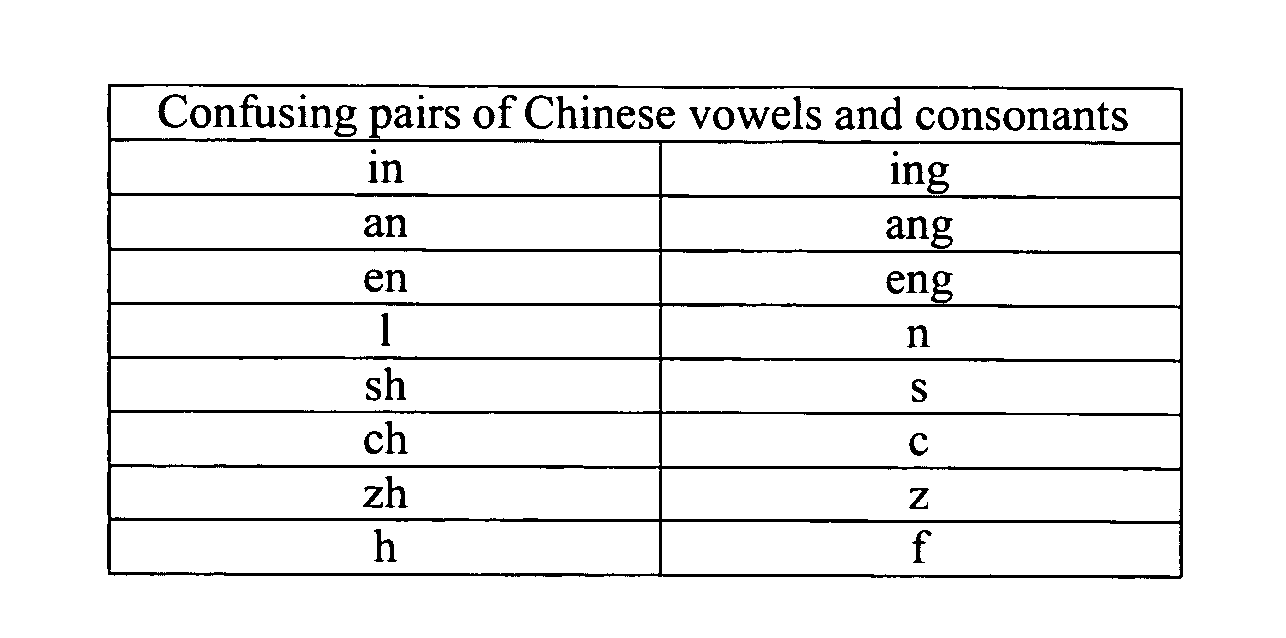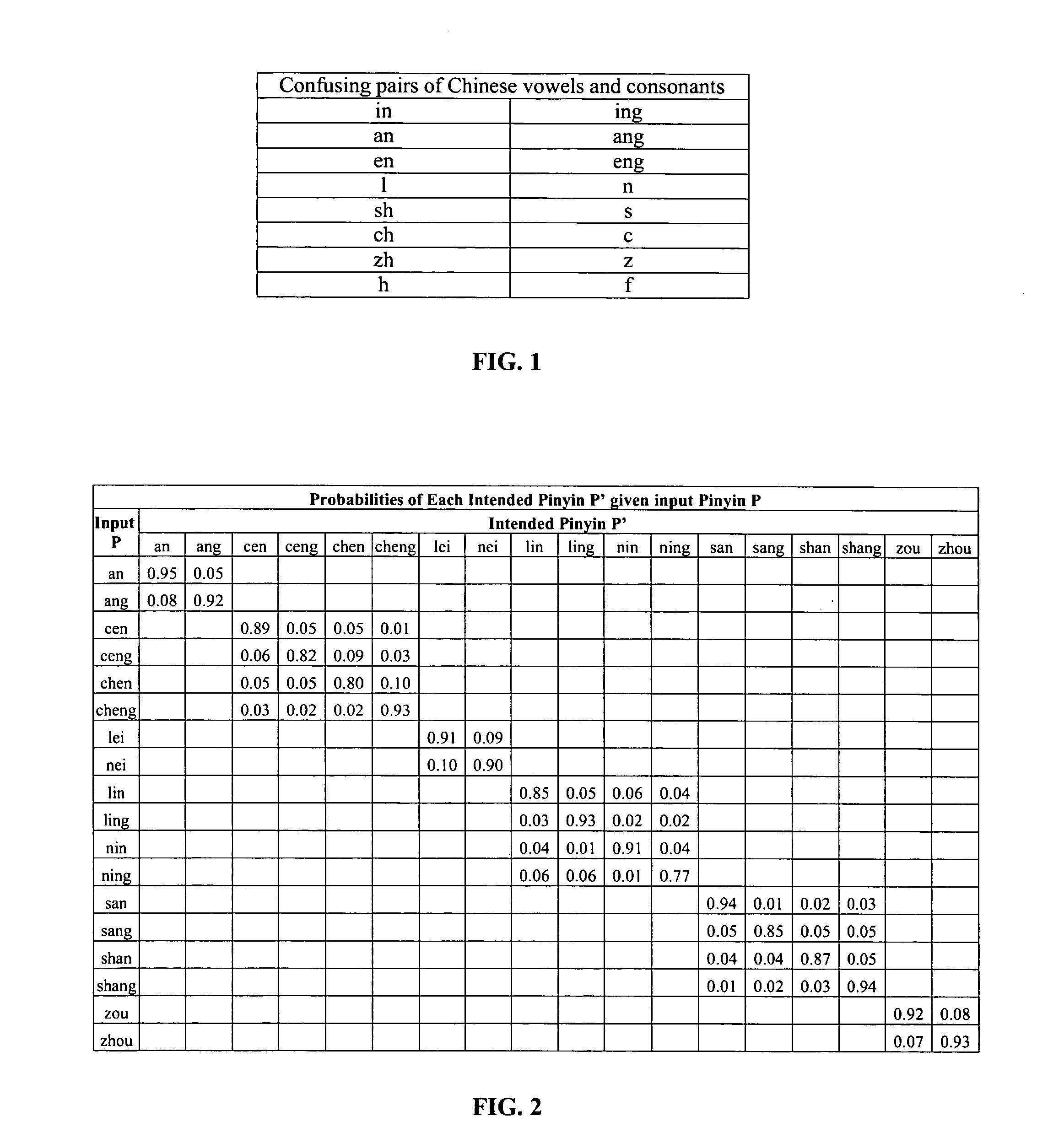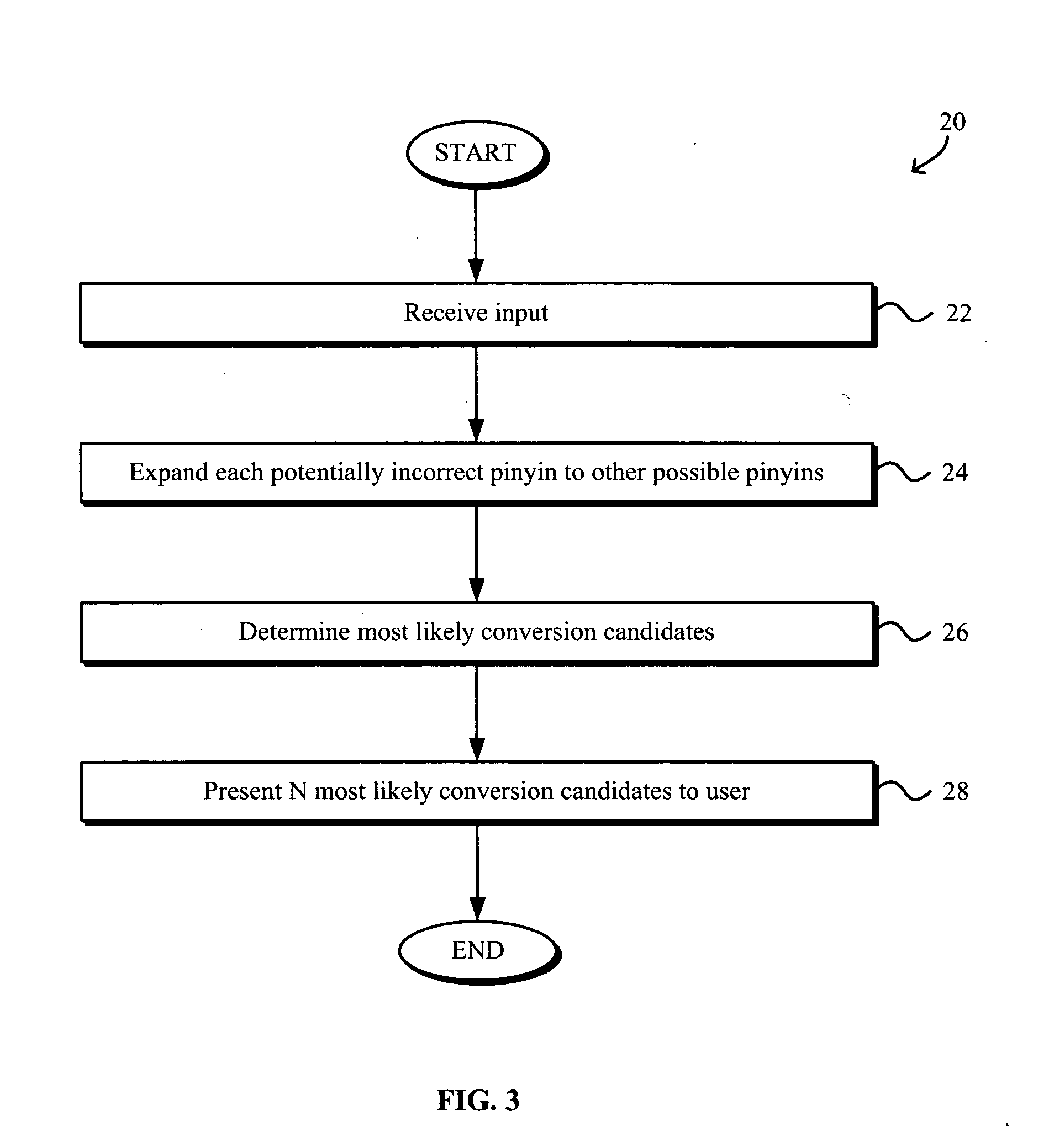Fault-tolerant romanized input method for non-roman characters
a non-roman language, fault-tolerant technology, applied in the field of processing non-roman based languages, can solve the problems of complex spell correction and difficulty for non-roman languages such as cjk languages, users of chinese language may not know the correct pronunciation (pinyins), and enter incorrect pinyin inputs
- Summary
- Abstract
- Description
- Claims
- Application Information
AI Technical Summary
Benefits of technology
Problems solved by technology
Method used
Image
Examples
Embodiment Construction
[0031] Fault-tolerant systems and methods to process and correct input spelling errors for non-Roman based languages such as Chinese, Japanese, and Korean (CJK) are disclosed. The fault-tolerant input systems and methods described herein generally relate to processing, detecting, and correcting spelling errors by employing probabilities that may be derived from user input entries and associated user selections such as query logs. It is noted that for purposes of clarity only, the examples presented herein are generally presented in terms of processing, detecting and correcting Chinese pinyin inputs. However, the systems and methods for spelling error detection and correction may be similarly applicable for other non-Roman based languages such as Japanese, Korean, Thai, etc. The following description is presented to enable any person skilled in the art to make and use the invention. Descriptions of specific embodiments and applications are provided only as examples and various modifi...
PUM
 Login to View More
Login to View More Abstract
Description
Claims
Application Information
 Login to View More
Login to View More - R&D
- Intellectual Property
- Life Sciences
- Materials
- Tech Scout
- Unparalleled Data Quality
- Higher Quality Content
- 60% Fewer Hallucinations
Browse by: Latest US Patents, China's latest patents, Technical Efficacy Thesaurus, Application Domain, Technology Topic, Popular Technical Reports.
© 2025 PatSnap. All rights reserved.Legal|Privacy policy|Modern Slavery Act Transparency Statement|Sitemap|About US| Contact US: help@patsnap.com



